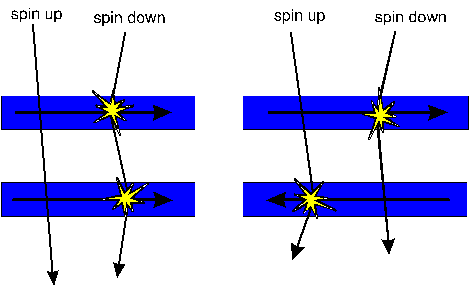The Wolf Prize for Physics, given by the Israeli Wolf Foundation and considered by many to be the second most important prize after the Nobel Prize, was awarded this year to the French scientist Albert Pert and the German scientist Peter Grunberg for the (separate) discovery of the GMR phenomenon
Alluvial container, Galileo

The Wolf Prize for Physics, given by the Israeli Wolf Foundation and considered by many to be the second most important prize after the Nobel Prize, was awarded this year to the French scientist Albert Fert and the German scientist Peter Gruenberg. The two discovered, separately, the phenomenon of GMR - giant magnetoresistance, which has important practical applications. The two will share the cash prize, in the amount of 100,000 dollars.
The GMR phenomenon, discovered in 1988 by the two separate research groups led by Pert and Grunberg, surprised the scientific world. "Magnetic resistance" is a change in the electrical resistance of a ferromagnetic material (which is a material that can be magnetized, such as iron, nickel and cobalt) as a result of an external magnetic field. Until the discovery of the GMR, it was known that such a change is quite small in relation to the original resistance of the material.
The researchers discovered that when two layers of ferromagnetic materials are separated by a thin layer of non-magnetic material, the resistance of the conductor can be changed to a very significant degree. When the magneto of the layers is parallel, current will move freely in the system. When it is reversed, the electrical resistance will rise beyond the value without a magnet. This phenomenon is based on the fact that the direction of the electron's spin in relation to the direction of the magnet of the material in which it moves affects the chances of the electron's scattering.
When the directions are reversed, the scattering chances are greater and the electrons do not pass freely. This is a high resistance situation. In order to create such a situation, the different layers are magnetized in opposite directions, so that each electron, regardless of the direction of its spin, will be deflected as it passes through one of the layers. On the other hand, when the direction of the magnetization of the layers is the same, half of the electrons pass without interference, and for them the electrical resistance is low (see figure). There are different ways to implement this idea, which try to deal with the difficulty of creating a reverse magnet for adjacent layers. Multi-layered devices, in which different materials of appropriate thickness are carefully selected, make it possible to bring this technology to fruition.
This discovery opened the door to a variety of technological applications, some of which are already realized today and some of which have potential for the future. In the field of magnetic storage, technology based on GMR makes it possible to compress more information into a smaller storage volume, and to read it more quickly. Almost every hard drive available today is based on this technology. Besides heads for reading magnetic information, this technology enables the creation of particularly sensitive sensors which also have a variety of applications. Another important feature of GMR facilities is their ability to produce a stream of electrons with a uniform spin direction. Such a stream of electrons with polarized spin could be used, in the future, to create fast computers that would rely on the direction of the electron's spin as the basis for the calculation operation.
